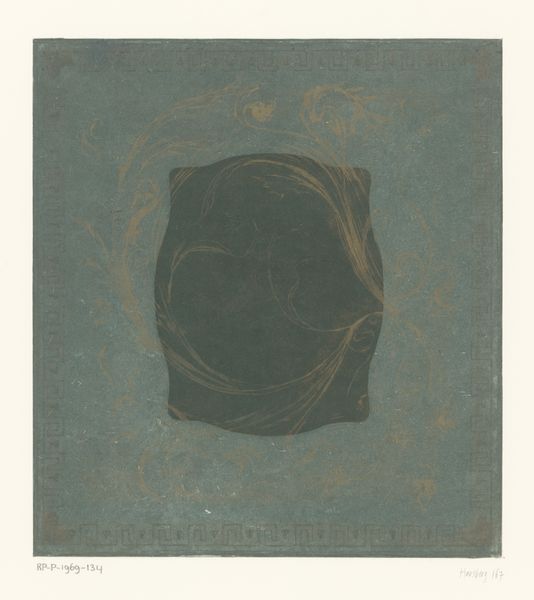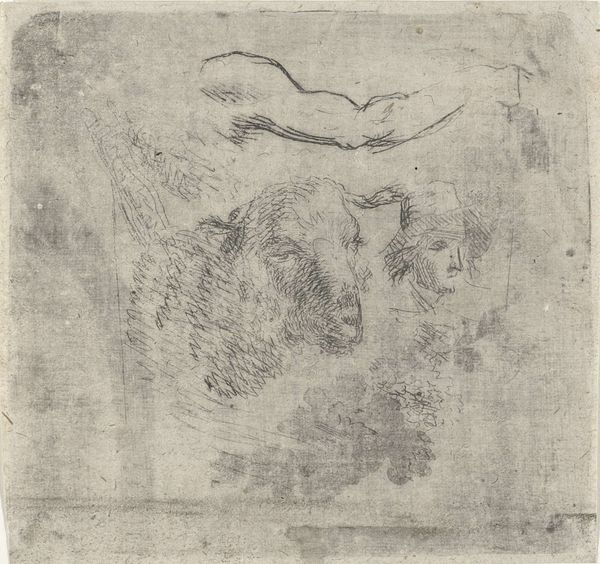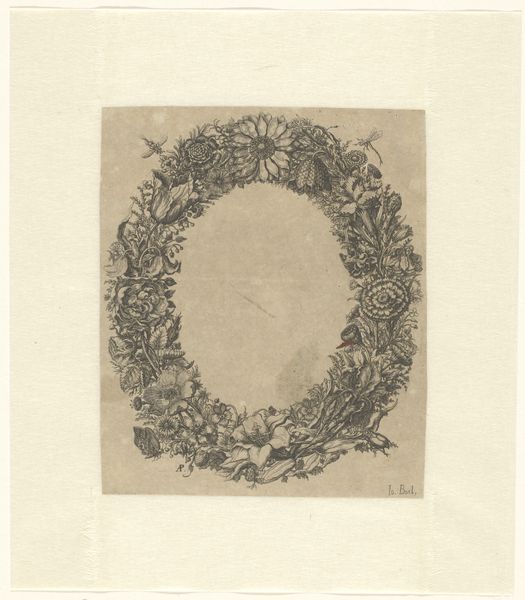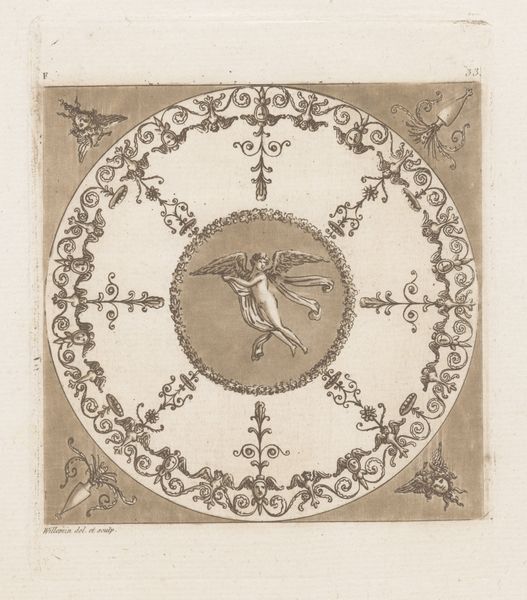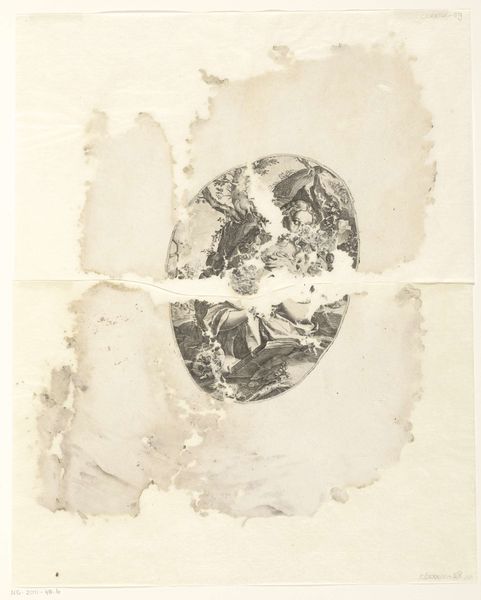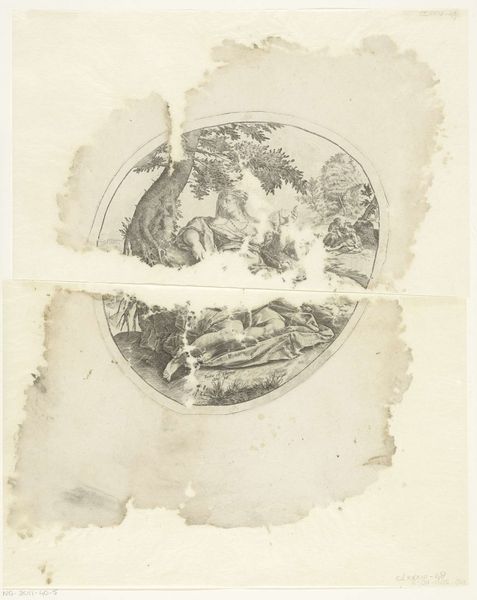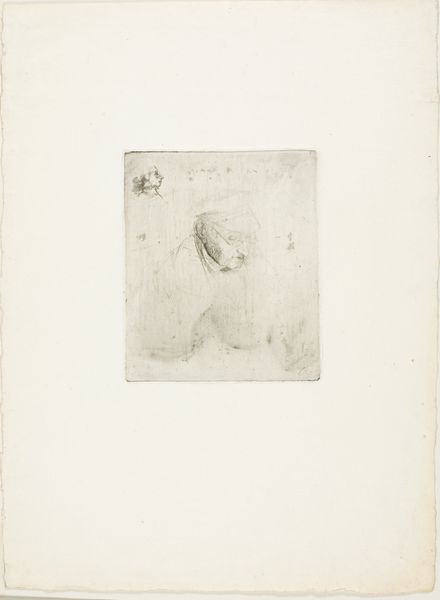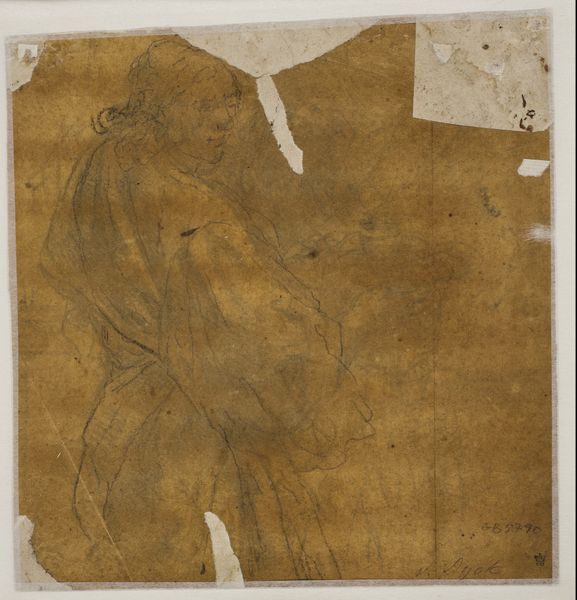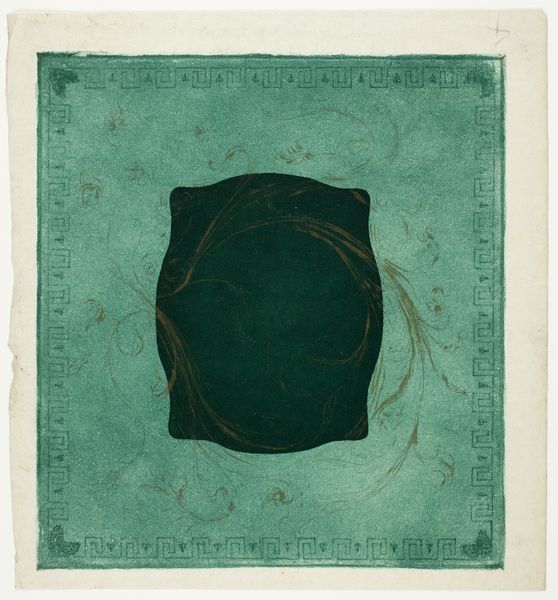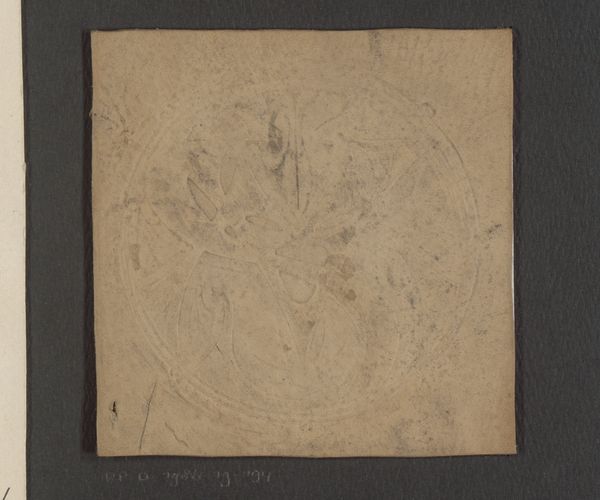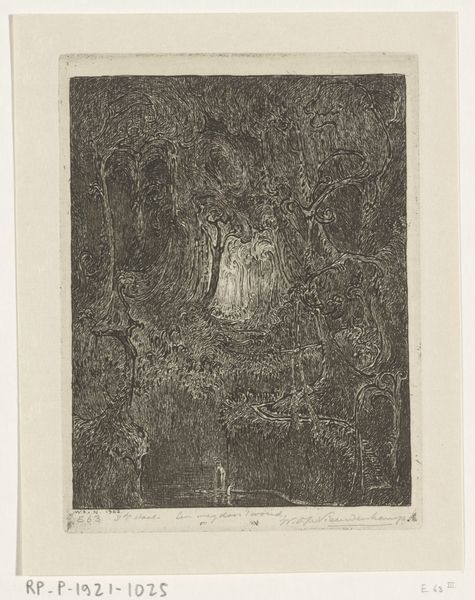
Silhouette of a young woman facing right in an oval frame 1825 - 1900
0:00
0:00
Dimensions: Sheet: 4 7/8 × 4 11/16 in. (12.4 × 11.9 cm)
Copyright: Public Domain
Curator: Here we have a delicate etching dating from between 1825 and 1900, titled "Silhouette of a young woman facing right in an oval frame," and attributed to Isabella Beetham. Editor: It's quite striking. The dark silhouette against the aged paper gives it a real sense of melancholy, almost as if the woman is fading into memory. And the oval frame, so meticulously etched, contains her like a relic. Curator: Precisely! Silhouettes like this were popular and affordable forms of portraiture in the 18th and 19th centuries, before photography became widespread. Beetham was one of many artists who offered these services, catering to a growing middle class seeking ways to record their likenesses. What’s especially notable here is Beetham’s clear success marketing this as a fashionable and professional rendering of a 'profile,' as marked along the bottom of the oval frame. Editor: I see what you mean. The clean lines of the silhouette contrast with the detailed embellishments around her neckline and the intricacies of the frame itself. The contrast enhances the sense of intimacy in her private adornment versus the objective constraints placed on women's self presentation, in this era. There is a quietness to the tonality overall too, the greys that surround her figure do that figure a favor. Curator: Exactly, and the printed inscription "PROFILES by M. Beetham Nº 27 Fleet Street," tells us about the commodification of art at the time, artists branding themselves, catering to market demands by establishing locations to solicit subjects, and it all speaks volumes about societal values placed on representation. The fact that it is a print allows the piece to be owned at varying degrees, so ownership is diversified, allowing multiple families and classes access to artwork, simultaneously supporting female artists and the professionalization of creative industries. Editor: That contextual insight changes my perception entirely! Now, it's not just a melancholic portrait, but also a window into the business of art and societal access to personal representations during that period. The details, down to her hair pulled back so deliberately, become part of a deliberate commercial statement by both sitter and the artist herself. Curator: It is quite revealing, isn't it? Looking at the physical object within the context of the era reveals a lot more about its function. It gives us, literally and figuratively, a framed perspective on art in that period. Editor: And for me, understanding those connections deepens the emotional impact of a form, knowing this wasn't just artistry, but a profession!
Comments
No comments
Be the first to comment and join the conversation on the ultimate creative platform.
